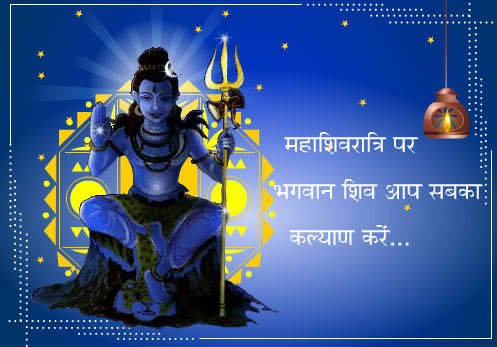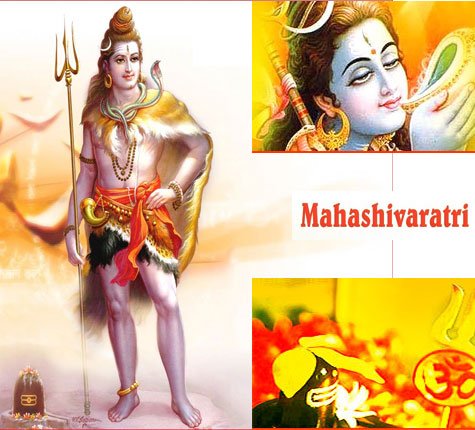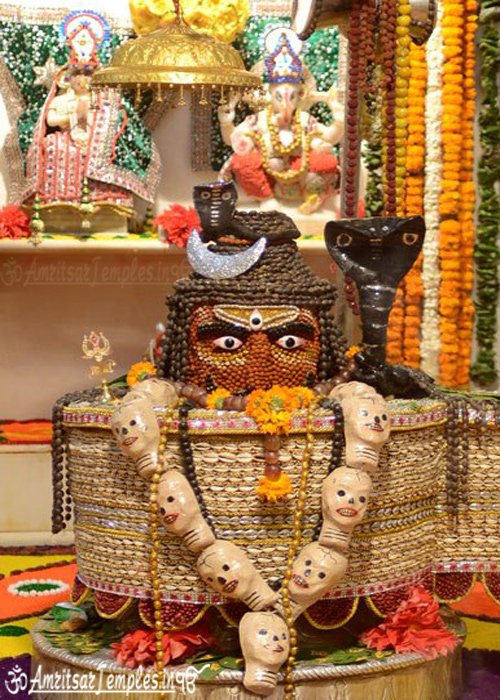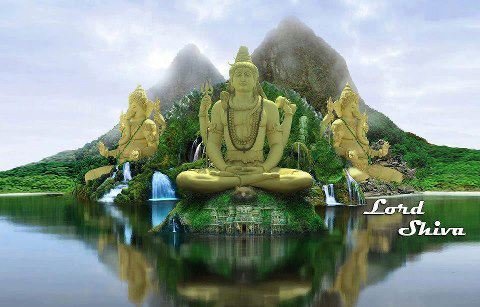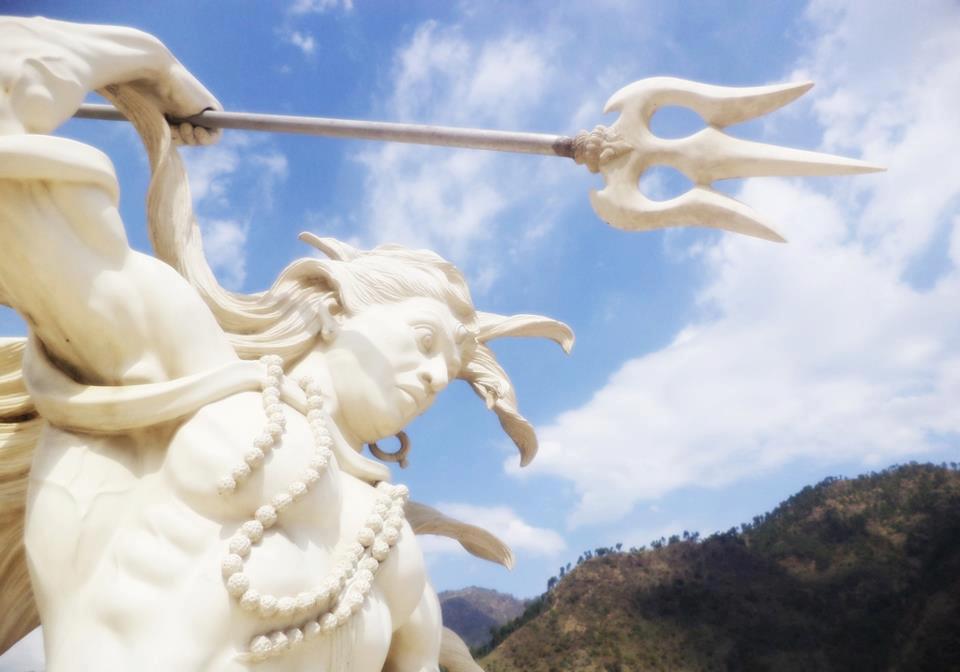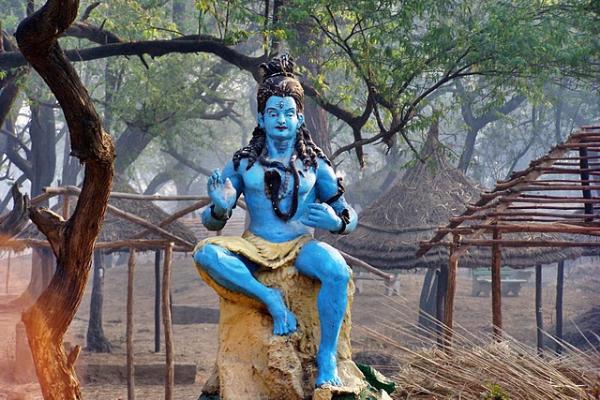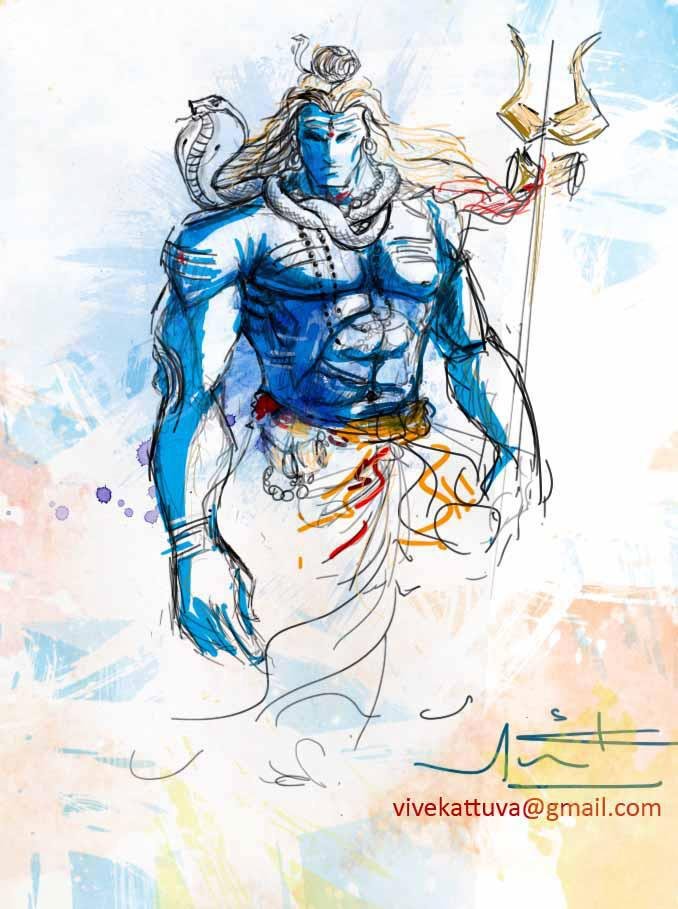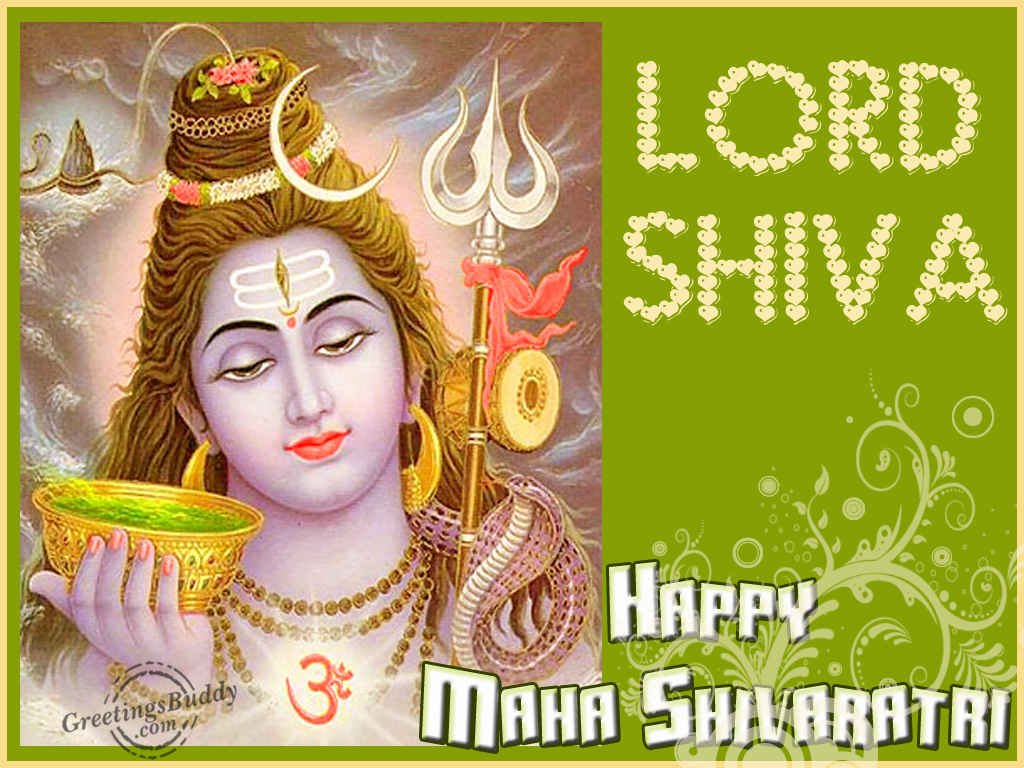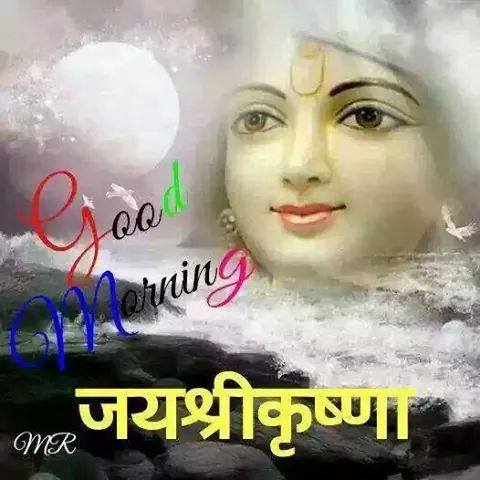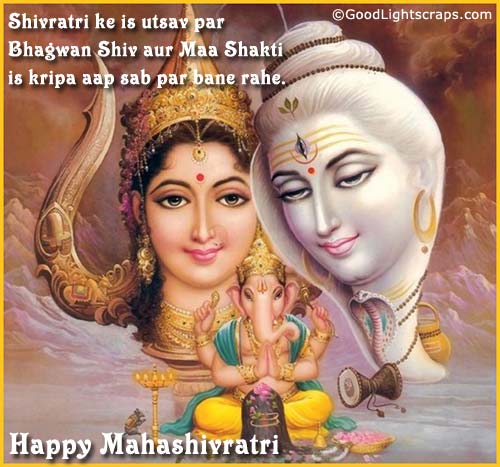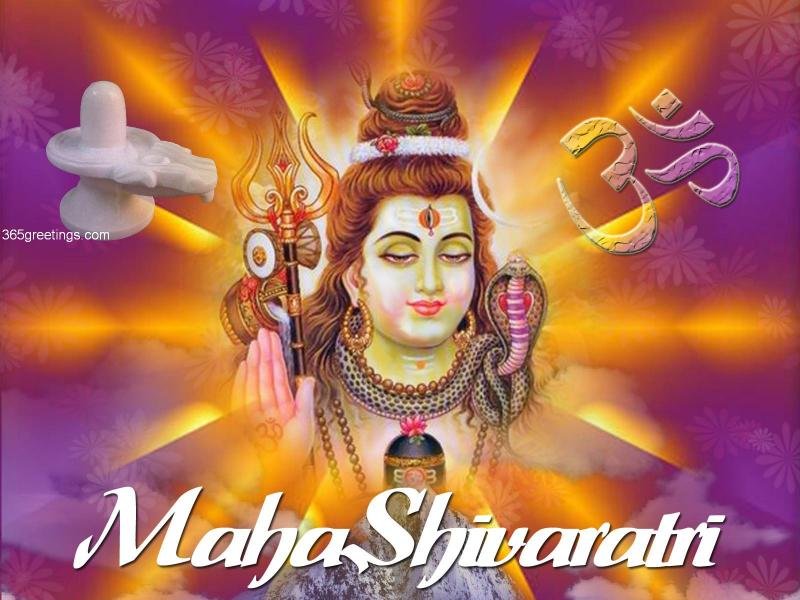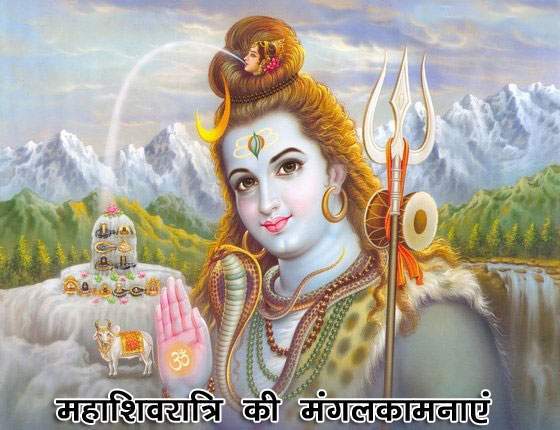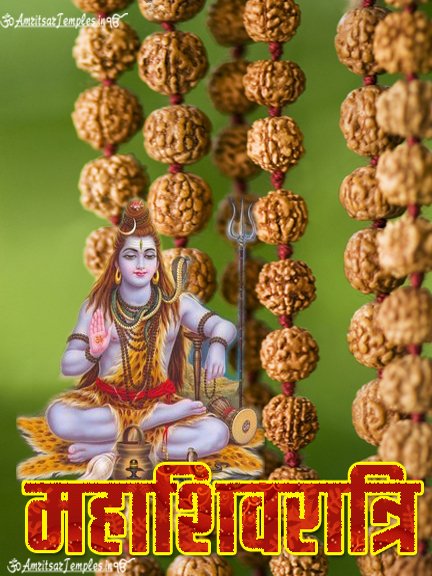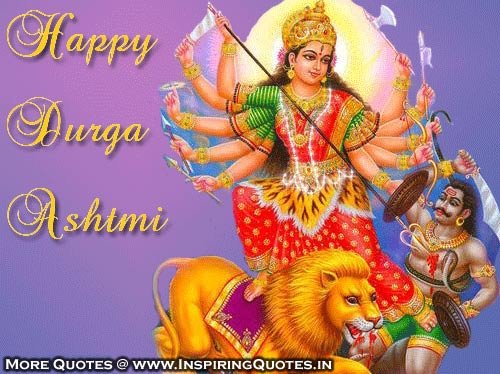Mahashivaratri Festival or the ‘The Night of Shiva’ is celebrated with devotion and religious fervor in honor of Lord Shiva, one of the deities of Hindu Trinity. Shivaratri falls on the moonless 14th night of the new moon in the Hindu month of Phalgun, which corresponds to the month of February – March in English Calendar. Celebrating the festival of Shivaratri devotees observe day and night fast and perform ritual worship of Shiva Lingam to appease Lord Shiva.
Legends of Mahashivratri
1. Marriage of Shiva and Shakti
2. Legend of Shiva Linga
3. Samudra Manthan
4. The Legend of Lubdhaka
5. The Legend of Ganga
6. Lord Shiva’s Assurance
1. Marriage of Shiva and Shakti
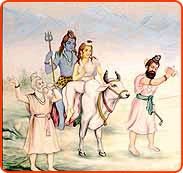 The legend of marriage of Shiva and Shakti is one the most important legends related to the festival of Mahashivaratri. The story tells us how Lord Shiva got married a second time to Shakti, his divine consort. According to legend of Shiva and Shakti, the day Lord Shiva got married to Parvati is celebrated as Shivaratri – the Night of Lord Shiva.
The legend of marriage of Shiva and Shakti is one the most important legends related to the festival of Mahashivaratri. The story tells us how Lord Shiva got married a second time to Shakti, his divine consort. According to legend of Shiva and Shakti, the day Lord Shiva got married to Parvati is celebrated as Shivaratri – the Night of Lord Shiva.
The Legend
Legend goes that once Lord Shiva and his wife Sati or Shakti were returning from sage Agastya’s ashram after listening to Ram Katha or story of Ram. On their way through a forest, Shiva saw Lord Rama searching for his wife Sita who had been kidnapped by Ravana, the King of Lanka. Lord Shiva bowed his head in reverence to Lord Rama. Sati was surprised by Lord Shiva’s behavior and inquired why he was paying obeisance to a mere mortal. Shiva informed Sati that Rama was an incarnation of Lord Vishnu. Sati, however, was not satisfied with the reply and Lord asked her to go and verify the truth for herself.
Using her power to change forms, Sati took the form of Sita appeared before Rama. Lord Rama immediately recognized the true identity of the Goddess and asked, “Devi, why are you alone, where’s Shiva?” At this, Sati realized the truth about Lord Ram. But, Sita was like a mother to Lord Shiva and since Sati took the form of Sita her status had changed. From that time, Shiva detached himself from her as a wife. Sati was sad with the change of attitude of Lord Shiva but she stayed on at Mount Kailash, the abode of Lord Shiva.
Later, Sati’s father Daksha organised a yagna, but did not invite Sati or Shiva as he had an altercation with Shiva in the court of Brahma. But, Sati who wanted to attend the Yagna, went even though Lord Shiva did not appreciate the idea. To hre great anguish, Daksha ignored her presence and did not even offer Prasad for Shiva. Sati felt humiliated and was struck with profound grief. She jumped into the yagna fire and immolated herself.
Lord Shiva became extremely furious when he heard the news of Sati’s immolation. Carrying the body of Sati, Shiva began to perform Rudra Tandava or the dance of destruction and wiped out the kingdom of Daksha. Everybody was terrified as Shiva’s Tandava had the power to destroy the entire universe. In order to calm Lord Shiva, Vishnu severed Sati’s body into 12 pieces and threw them on earth. It is said that wherever the pieces of Shakti’s body fell, there emerged a Shakti Peetha, including the Kamaroopa Kamakhya in Assam and the Vindhyavasini in UP.
Lord Siva was now alone undertook rigorous penance and retired to the Himalayas. Sati took a re-birth as Parvati in the family of God Himalaya. She performed penance to break Shiva’s meditation and win his attention. It is said that Parvati, who found it hard to break Shiva’s meditation seeked help of Kamadeva – the God of Love and Passion. Kaamadeva asked Parvati to dance in front of Shiva. When Parvati danced, Kaamadeva shot his arrow of passion at Shiva breaking his penance. Shiva became extremely infuriated and opening his third eye that reduced Kaamadeva to ashes. It was only after Kamadeva’s wife Rati’s pleading that Lord Shiva agreed to revive Kaamadeva.
Later, Parvati undertook severe penance to win over Shiva. Through her devotion and persuasion by sages devas, Parvati, also known as Uma, was finally able to lure Shiva into marriage and away from asceticism. Their marriage was solemnized a day before Amavasya in the month of Phalgun. This day of union of God Shiva and Parvati is celebrated as Mahashivratri every year.
Another Version of the Legend
According to another version of the legend, Goddess Parvati performed tapas and prayers on the auspicious moonless night of Shivaratri to ward off any evil that may befall her husband. Since then, womenfolk began the custom of praying for the well being of their husbands and sons on Shivaratri day. Unmarried women pray for a husband like Shiva, who is considered to be the ideal husband.
2. Legend of Shiva Linga
 The legend of Shiva Linga or Lingodbhavamurthy is deeply related to Mahashivaratri. The legend narrates the story of vain search by Brahma and Vishnu to discover the Aadi (beginning) and the Antha (end) of Lord Shiva. The legend thus proves the supremacy of Lord Mahadeva over other Hindu Gods and explains why the lingam is believed to be one of the most potent emblems in Hindu ideals. The story is stated in the three of the puranas – the Kurma Purana, the Vayu Purana and Shiva Purana
The legend of Shiva Linga or Lingodbhavamurthy is deeply related to Mahashivaratri. The legend narrates the story of vain search by Brahma and Vishnu to discover the Aadi (beginning) and the Antha (end) of Lord Shiva. The legend thus proves the supremacy of Lord Mahadeva over other Hindu Gods and explains why the lingam is believed to be one of the most potent emblems in Hindu ideals. The story is stated in the three of the puranas – the Kurma Purana, the Vayu Purana and Shiva Purana
The Legend
According to Puranas, once the other two of the triads of Hindu Gods, Brahma and Vishnu were fighting over each other’s prowess. Horrified at the intensity of the battle, the other gods asked Shiva to intervene. To make them realize the futility of their fight, Lord Shiva assumed the form of a flaming Linga in between Brahma and Vishnu and challenged both of them by asking them to measure the gigantic Linga (phallic symbol of Lord Shiva).
Awestruck by its magnitude, Brahma and Vishnu decided to find one end each to establish supremacy over the other. Lord Brahma took the form of a swan and went upwards while Lord Vishnu assumed the form of Varaha – a boar and went into the earth towards nether land. Both searched for thousands of miles but neither could find the end.
On his journey upward, Brahma came across Ketaki flower. Exhausted and bewildered with his search to find the uppermost limit of fiery column, Brahma made Ketaki assent to lie that he had seen the top of the column where the flower had previously resided. Accompanied by his accomplice, Brahma confronted Vishnu and asserted that he had indeed discovered the origin of the cosmic column.
At this point, the central part of the pillar split open and Shiva revealed himself in his full glory. Overawed, both Brahma and Vishnu bowed before him accepted lord Shiva’s supremacy. Lord Shiva also explained to Brahma and Vishnu that both of them were born out of him and that the three were then separated out into three different aspects of divinity.
However, Lord Shiva was angry with Brahma for making a false claim. The Lord cursed Brahma that no one would ever pray to him. (This legend explains why there is hardly any Brahma temple of significance in India.) Lord Shiva also punished the Ketaki flower for testifying falsely and banned her from being used as an offering for any worship.
Since it was on the 14th day in the dark fortnight of the month of Phalguna that Shiva first manifested himself in the form of a Linga, the day is extremely auspicious and is celebrated as Mahashivaratri – the grand night of Shiva. To celebrate the occasion, devotees of Lord Shiva fast during the day and pray to the Lord throughout the night. It is said that worshipping of Lord Shiva on Shivaratri bestows one with happiness and prosperity.
3. Samudra Manthan
 This very popular Shivaratri legend from Puranas explains why people stay awake all night on Shivaratri. Besides, it also tells us why Lord Shiva is also known as Neelakantha.
This very popular Shivaratri legend from Puranas explains why people stay awake all night on Shivaratri. Besides, it also tells us why Lord Shiva is also known as Neelakantha.
Legend Behind Samudra Manthan
Once Indra – the King of Gods, while riding on an elephant came across Durvasa Muni who offered him a special garland. Indra accepted the garland but put in on the trunk of the elephant. The elephant was irritated by the smell and it threw the garland on the floor. This enraged the sage as the garland was a dwelling of Sri (fortune) and was to be treated as prasada. Durvasa Muni cursed Indra and all devas to be bereft of all strength, energy, and fortune.
In battles that followed this incident, devas were defeated and asuras (demons) led by Bali gained control of the universe. Devas sought help from Lord Vishnu who advised them to treat asuras in a diplomatic manner. Devas formed an alliance with asuras to jointly churn the ocean for the nectar of immortality and to share it among them. Lord Vishu told Devas that we would arrange that they alone obtain the nectar.
The Churning of the Ocean
The churning of the milk – ocean was an elaborate process. Mount Mandara was used as churning rod and Vasuki,the King of Serpents, became the churning rope. Lord Vishnu himself had to intercede in so many ways to aid the Devas. All kinds of herbs were cast into the ocean and many great beings and objects were produced from the ocean and were divided between asuras and gods. It is said that following things emerged from the Samudra Manthan:
- Sura or Varuni – Goddess and creator of wine
- Apsaras – various divine nymphs
- Kaustubha – a rare diamond said to be the most valuable jewel in the world
- Uchhaishravas – the divine white horse
- Kalpavriksha – the wish-granting tree
- Kamadhenu – the wish fulfilling cow
- Airavata – the white elephant
- Lakshmi – the Goddess of Fortune and Wealth. Vishnu and Her were reunited after having been separated for many ages.
Haalaa-Hala – the Poison
During the Sagar Manthan by the gods and demons, haalaa-hala, a pot of poison also came out of the ocean. This terrified the Gods and demons as the poison was so toxic that it effects would have wiped out the entire creation. On the advice of Lord Vishnu, Gods approached Lord Shiva for help and protection as only he could swallow it without being affected. On the request of gods and out of compassion for living beings, Lord Shiva drank the poison. However, Parvati – Lord Shiva’s consort pressed his neck so that the poison does not reach his stomach. Thus, it stayed in his throat neither going up nor going down and Shiva remained unharmed. The poison was so potent that it changed the color of Lord Mahadeva’s neck to blue. For this reason, Lord Shiva is also called Neelakantha (the blue-necked one) where ‘Neela’ means blue and ‘Kantha’ means neck or throat.
As part of the therapy, doctors advised gods to keep Lord Shiva awake during the night. Thus, Gods kept a vigil in contemplation of Lord Shiva. To amuse Shiva and to keep him awake, the gods took turn performing various dances and playing music. As the day broke out, Lord Shiva, pleased with their devotion blessed them all. Shivaratri is the celebration of this event by which Shiva saved the world. Since then, on this day and night – devotees fast, keep vigil, sing glories of Lord and meditate.
Churning Out Divine Nectar
At last, Dhanvantari – the Divine Physician appeared with a pot of Amrita (nectar of immortality) in his skilful hands. Fierce fighting ensued between devas and asuras for the nectar. To protect the nectar from asuras, devas hid the pot of nectar at four places on the earth – Prayag (Allahabad), Haridwar, Ujjain and Nasik. At each of these places, a drop of the nectar spilled from the pot and since then, it is believed that these places acquired mystical power. Grand Kumbh Mela is celebrated at the four places after every 12 year for this reason.
Eventually, Lord Vishnu took the form of a beautiful woman, Mohini. While her beauty bewildered the asuras, Mohini seized the nectar and returned it to the Devas, who drank it immediately.
4. The Legend of Lubdhaka
 The legend of Lubdhaka is deeply related to Mahashivaratri and explains the popular custom of all-night worship of Lord Shiva on the festival. As a tradition devotees recite the legend of Lubdhaka while they observe fast in worship of Lord Shiva on Mahashivaratri. And, it is only after observing an all night fast that devotees eat the prasad offered to Shiva.
The legend of Lubdhaka is deeply related to Mahashivaratri and explains the popular custom of all-night worship of Lord Shiva on the festival. As a tradition devotees recite the legend of Lubdhaka while they observe fast in worship of Lord Shiva on Mahashivaratri. And, it is only after observing an all night fast that devotees eat the prasad offered to Shiva.
There is yet another version of this legend, which is popular as the legend of King Chitrabhanu. This legend has been narrated by Bhishma in Shanti Parva of the Mahabharata and has been discussed later in this article.
Story of Lubdhaka
Story goes that Lubdhaka – a poor tribal man and a devout worshipper of Lord Shiva once went into the deep forests to collect firewood. As the darkness engulfed the jungle, Lubdhaka lost his way and could not find his way home. He became extremely terrified as deep growls of animals began to fill the jungle. Seeking protection till daybreak, Lubdhaka climbed the nearest bel tree and sought safety and shelter in its branches. Since Lubdhaka was perched on the branch of a tree he was afraid that if he dozed he might fall off from the tree. To keep himself awake all night, Lubdhaka decided to pluck one leaf from the bheel tree and drop it while chanting the name of Shiva. By sunrise, the devout tribal realized that he had dropped thousands of leaves on to a Shiva Lingam, which he had not seen in the darkness. Lubdhaka’s all night worship pleased Lord Shiva and by his divine grace tigers and other wild animals went away. Thus, Lubdhaka not only survived but was also rewarded with divine bliss.
According to Puranas, ever since that day, the story of the tribal Lubdhaka has been recited every year on the night of Mahashivaratri. This popular legend also form the basis of the popular custom of offering bhel (Aegle marmelos) leaves to Lord Shiva on Shivaratri.
Different Version of the Legend – Story of King Chitrabhanu
Shanti Parva of the Mahabharata, talks about the legend of King Chitrabhanu observing the festival. The story, as told by Bhishma while resting on the bed of arrows and discoursing on Dharma, says that once King Chitrabhanu of the Ikshvaku dynasty who ruled over the whole of Jambudvipa was observing a fast with his wife, it being the day of Maha Shivaratri. The sage Ashtavakra came on a visit to the court of the king and inquired the king about reasons for keeping a fast.
Answering the sage’s query, King Chitrabhanu who had the gift of remembering the incidents from his previous birth said that in the past birth he was a hunter in Varanasi and his name was Suswara. His livelihood was to kill and sell birds and animals. One day while he was roaming through the woods in search of animals, he was overtaken by the darkness of the night. To seek shelter from wild animals, Suswarna seeked shelter in the branches of nearest tree, which happened to a bael. Suswarna has also shot a deer that day but had no time to take it to home. So he bundled it up and tied it to a branch on the tree. Hunger and thirst tormented Suswarna and kept him awake all night. Feeling sad that his poor wife and children were starving and must be anxiously waiting for his return, Suswarna began to shed profuse tears. To pass away time, Suswarna engaged himself in plucking bael leaves and dropping them down onto the ground.
Having passed the night thus, next morning, Suswarna sold the deer and bought some food for himself and his family. But, the moment he was about to break his fast, a stranger came to him begging for food. Humbly, Suswarna served food to stranger first and then had his own.
Later, at the time of his death, Suswarna saw two messengers of Lord Shiva who were sent down to conduct his soul to the abode of Lord Shiva. It was then that Suswarna learnt for the great merit he had earned by the unconscious worship of Lord Shiva during the night of Shivaratri. The divine messengers told Suswarna that there was a Lingam at the bottom of the tree on which he spent the night. The leaves he dropped therefore fell on the Lingam. While his tears, which he had shed out of sorrow for his family, fell on the lingam and washed it. Besides, he had observed a fast all day and all night. Thus, Suswarna had unconsciously worshiped the Lord Shiva.
Concluding the story, the King said that he lived in the abode of the Lord and enjoyed divine bliss for long ages. Now, he has reborn as Chitrabhanu.
5. The Legend of Ganga
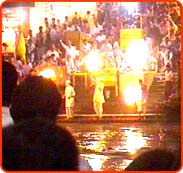 The legend of Ganga’s descent from the heavens into the earth has been narrated in the Hindu mythological epic of Ramayana. The legend explains the popular custom of giving bath to Shiv Linga on Shivaratri festival.
The legend of Ganga’s descent from the heavens into the earth has been narrated in the Hindu mythological epic of Ramayana. The legend explains the popular custom of giving bath to Shiv Linga on Shivaratri festival.
The Legend
Once King Sagar – the ruler of Ayodhya and an ancestor of Lord Rama successfully performed the Ashwamedha Yagya for 99 times. Each time, he sent the horse around the earth it returned to the kingdom unchallenged. However, Indra – the King of God’s became jealous of King Sagar’s success. So when King Sagar performed the sacrifice of the 100th time, Indra kidnapped and hid the Yagya horse in the hermitage of Kapila Muni
In search of the horse, sixty thousand princes from Ayodhya reached Kapil Muni’s hermitage. They mistook the sage to be the abductor and attacked him. An enraged Kapila Muni burnt the 60,000 princes to ashes. On hearing about the plight of his father and uncles, King Bhagiratha – one of the grandchildren of King Sagar requested Kapila Muni to grant a solution to the problem. Kapila Muni advised that the waters of the river Ganga would miraculously bring back the dead princes to life.
King Bhagirath left his kingdom and began to mediate for the salvation of the souls of his ancestors. It is said that Bhagirath observed a penance to Brahma for a thousand years, requesting Ganga to come down to earth from heaven and wash over his ancestor’s ashes to release them from a curse and allow them to go to heaven. Pleased with the devotion, Brahma granted Bhagirath’s wish but told him to pray to Lord Shiva, as he alone could sustain the weight of her descent.
Accordingly, Lord Shiva held out his thick matted hair to catch the river as she descended. The meandering through Shiva’s lock softened Ganga’s journey to the earth and the holy waters of river Ganga thus washed away the ashes of Bhagirath’s ancestors. A modified version of the legend says, what reached the earth were just sprinkles from Lord Shiva’s hair. The Ganga, thus, became an attribute of Shiva. This manifestation of Shiva is known as Gangadhara.
The legend is re-enacted by devotees of Lord Shiva as they give a bath to the linga during worship. And for this reason, many devotees prefer to take a dip in the holy water of river Ganga on a Shivaratri day.
6. Lord Shiva’s Assurance
The legend of Lord Shiva’s assurance explains the popularity of Shivaratri festival amongst the devotees. Besides, it also tells us why we observe fast in the name of the Lord and perform ceremonial baths on a Shivaratri day.
The Legend
Story goes that after creation was complete, Lord Shiva began to live on top of the mount Kailash with his consort Parvati. One day, Goddess Parvati asked Shiva that his devotees perform many rituals to please the Lord, but which one pleases him most. To this, Lord Shiva replied that the 14th night of the new moon, during the month of Phalgun is his favorite day. The day is celebrated as Shivaratri. On this day, devotees observe strict spiritual discipline and worship Shiva in four different forms during each of the four successive three-hour periods of the night. Lord further said that the devotees offer him bel leaves on the day and that those leaves were precious to him than the precious jewels and flowers. Explaining the right way of worshipping to Shiva, the Lord said, devotees should bathe me in the milk during the first period, in curd at the second, in clarified butter in the third and in honey in the fourth and the last period. Lord Shiva further added that next morning devotees must feed the Brahmins first and, only after following the prescribed ritual must he break the fast. Shiva further told Parvati that rituals of Shivaratri could not be compared with any other.
Goddess Parvati became deeply impressed with Lord Shiva’s speech and she narrated it to her friends. Through them the word spread all over the creation. Hence, Shiva devotees began to celebrate Shivaratri by fasting and by performing the ceremonial baths and making an offering of Bel leaves.
 Amritsar Temples Photo Gallery, Famous Temple and Gurdwara Pictures, Information and History Amritsar Temples is the best place where you find beautiful collections of Amritsar Temple pictures, Info and history like golden temple, durgiana mandir, model town, mata lal devi mandir, shivala bagh bhayian and more. Amritsar Famous Temples, History, Information, About Historical Mandir, Golden Temple Pictures, Harmandir Sahib Gurdwara, Swarn Mandir, Darbar Sahib Amritsar, Durgiana Mandir Amritsar, Bada Hanuman Mandir Amritsar, Holy City Amritsar Pictures, Famous Amritsar Places, Shivala Bagh Bhayian Mandir,Bhadra Kali Mata Mandir, Chintpurni Mata Mandir, Ram Talai Mandir, Ram Tirath, Model Town, Mata Lal Devi Mandir, Shaheeda Sahib Gurdwara, Vaishno Devi Mata Bhawan Pictures, Radha Sawami Baba Ji Pictures, Veer Bhan Shivala, Gurdwara Chheharta Sahib, Sankat Mochan Hanuman Mandir, Gurdwara San Sahib, Banke Bihari Mandir, Gurdwara Goindwal Sahib, Baba Budha Sahib, Bohli Sahib, Itihasik Temples Pictures Download, Baba Bhoot Nath Maha Kaleshwar Mandir
Amritsar Temples Photo Gallery, Famous Temple and Gurdwara Pictures, Information and History Amritsar Temples is the best place where you find beautiful collections of Amritsar Temple pictures, Info and history like golden temple, durgiana mandir, model town, mata lal devi mandir, shivala bagh bhayian and more. Amritsar Famous Temples, History, Information, About Historical Mandir, Golden Temple Pictures, Harmandir Sahib Gurdwara, Swarn Mandir, Darbar Sahib Amritsar, Durgiana Mandir Amritsar, Bada Hanuman Mandir Amritsar, Holy City Amritsar Pictures, Famous Amritsar Places, Shivala Bagh Bhayian Mandir,Bhadra Kali Mata Mandir, Chintpurni Mata Mandir, Ram Talai Mandir, Ram Tirath, Model Town, Mata Lal Devi Mandir, Shaheeda Sahib Gurdwara, Vaishno Devi Mata Bhawan Pictures, Radha Sawami Baba Ji Pictures, Veer Bhan Shivala, Gurdwara Chheharta Sahib, Sankat Mochan Hanuman Mandir, Gurdwara San Sahib, Banke Bihari Mandir, Gurdwara Goindwal Sahib, Baba Budha Sahib, Bohli Sahib, Itihasik Temples Pictures Download, Baba Bhoot Nath Maha Kaleshwar Mandir

